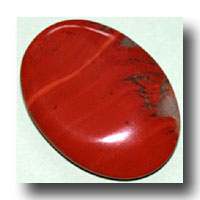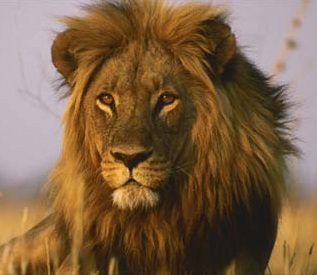| Scripture |
Additional Comments |
| |
|
| 1 After this I looked, and, behold, a door was opened in heaven: and the first voice which I heard was as it were of a trumpet talking with me; which said, Come up hither, and I will show thee things which must be hereafter. |
After this – This does not indicate a progression in time, i.e., that this vision would chronologically follow the messages to the churches (chapters 2,3) but rather this indicates that after John saw the prior vision he now sees another vision.
I looked – This is important. Remember our Lords words to his disciples during the last few days of his earthly life: "What I say unto you I say unto all, Watch." Mark 13:37
A door was open – An open door is always a symbol of opportunity. In heaven -- The power of spiritual control. This open door in heaven seems to indicate the opportunity to run for the mark for the prize of the high calling of God in Christ Jesus.
The first voice – The voice is associated with the Message of God. In this case it is the first voice, indicating the voice of Jesus. Compare with 1 Thess. 4:16.
I – John, the church in the flesh during the time of our Lord's second presence.
Heard – The saints are always 'listening' for the voice of the Lord.
As it were – It is not actually a trumpet talking, but it seems to be.
A trumpet – The seventh trumpet - the trumpet of Jubilee. This vision seems to take place at the time of the seventh trumpet. This thought is supported by vs 10.
Come up hither – Come up here to the spiritual vantage point. |
| 2 And immediately I was in the spirit; and, behold, a throne was set in heaven, and one sat on the throne. |
I – John, the church in the flesh during the time of our Lord's second presence.
In the spirit – A spirit-begotten, spiritually minded new creature in Christ, now viewing things from the divine standpoint.
A throne – The throne of God.
One sat on the throne – The ancient of days, our Heavenly Father. |
| 3 And he that sat was to look upon like a jasper and a sardine stone: and there was a rainbow round about the throne, in sight like unto an emerald. |
Like unto a jasper and a sardine stone – Perhaps not two stones but one. A sardine stone is "blood red" and this is what a red jasper stone looks like: Thus it is always a reminder that the foundation of God's throne is justice. Since the ransom is the expression of God's justice and this involves the sacrifice of Christ Jesus - his blood, we see the appropriateness of this blood red color. Thus it is always a reminder that the foundation of God's throne is justice. Since the ransom is the expression of God's justice and this involves the sacrifice of Christ Jesus - his blood, we see the appropriateness of this blood red color.
A rainbow – Symbolic of a covenant (Gen. 9:13).
Round about the throne – Thus indicating this throne scene is associated with a covenant, but which one?
Like unto an emerald – A green stone. Green is symbolic of earthly restitution. This would seem to point to the New Covenant when the earth would be restored.
Remember, this begins with John (the church in the flesh during our Lord's 2nd Presence) being taken up to view things from God's standpoint. This is the only way to properly understand this vision. The New Covenant cannot go into effect until the church class is fully complete in glory. This explains why we have the indication that it is time for the New Covenant (in sight like unto an emerald), but it is not yet established. If it were established at the time of this vision, why would there be thunderings (controversies)? vs. 5.
Compare Eze. 1:28. |
| 4 And round about the throne were four and twenty seats: and upon the seats I saw four and twenty elders sitting, clothed in white raiment; and they had on their heads crowns of gold. |
Twenty four elders – Old Testament (especially the prophetic writings). - Click on the image below.
"Twenty-four prophets that have prophesied of 'things pertaining to the kingdom of God.'" – W.I.Mann R529:3-4
White raiment – Purity.
Crowns of gold – Divine authority. R529; R4798 |
| 5 And out of the throne proceeded lightnings and thunderings and voices: and there were seven lamps of fire burning before the throne, which are the seven Spirits of God. |
And out of the throne proceeded lightnings – Compare Eze. 1:13.
Lightning generally represents diffusions of knowledge. Consider the symbol. A sudden burst of light (truth, knowledge). This is different from the light of the Sun in that it comes sudden and brief.
See Expanded comments on Psa. 97:4.
Thunderings – Generally a symbol for controversies (caused by the diffusions of knowledge, the lightning).
Seven lamps of fire – The seven-fold spirit of God, the Holy Spirit.
Before the throne – See additional comments verse 6.
Which are the seven Spirits of God – The thought here is NOT that God has seven different spirits but rather this is the ONE Holy Spirit of God that is sent to the SEVEN stages of the church during the Gospel Age. |
| 6 And before the throne there was a sea of glass like unto crystal: and in the midst of the throne, and round about the throne, were four beasts full of eyes before and behind. |
Before the throne – This expression seems to indicate two things.
(1) A clear connection with the throne of God.
(2) This takes place on earth.
In support of this latter thought please note Rev. 5:6 where these 7 spirits of God are sent forth into all the earth.
See Bible Topics "Before the Throne."
Sea of glass – Sea = irreligious, restless masses of mankind. This shows the view from the throne of God. The sea class is not clouded but clear (as looking through a glass-bottom boat).
Please see R529 (W.I.M.) for a good brief explanation of the sea of glass.
Four beasts – 4 "living creatures" - These picture the four attributes of God.
Full of eyes – It does not say 'they had eyes,' but rather they are 'full of eyes.' This is to help us understand that God's attributes are all seeing. There is no place where God does not see.
Before and behind – Not only does this imply all directions at once but it also seems to indicate that God sees the end from the beginning, both the past as well as the future. |
| 7 And the first beast was like a lion, and the second beast like a calf, and the third beast had a face as a man, and the fourth beast was like a flying eagle. |
Please see Four Attributes in Symbol.
Lion – Power. Shown both by our Lord as the "Lion of the tribe of Judah" (Gen. 49:9-10;) and by the adversary who is described as "a roaring lion" in 1 Pet. 5:8.
See also Num. 23:24; 2 Sam. 17:10; Pro. 30:30
Calf – Justice. Our Lord is symbolized in the young bullock (calf) being sacrificed for us on the Day of Atonement (Lev. 16).
Man – Love. Man was made in the image of God and "God is love." 1 John 4:8, 16
Eagle – Wisdom. The eagle is known for its far-sightedness.
Note: "Ruppell's Griffon" is a type of Vulture (eagle.)
The following information is from phoenixzoo.org"Ruppell's Griffon is the highest flying bird on record, once spotted at an altitude of over 37, 000 feet in the skies of West Africa. From a standing start the Ruppell's vulture can fly over three miles in six minutes. They can cruise at over 22 mph, and will fly as far as 90 miles from a nest site to find food. When thermal currents start to develop enough lift, about two hours after sunrise, Ruppell's vultures leave the roost and begin to patrol over the plains, using their exceptionally keen eyesight to find large animal carcasses, or carnivores which have made a kill. The Ruppell's vulture often stays in the air for six to seven hours a day."
The Four Attributes of God. - Compare this verse with Eze. 1:10 and Eze. 10:14. |
| 8 And the four beasts had each of them six wings about him; and they were full of eyes within: and they rest not day and night, saying, Holy, holy, holy, Lord God Almighty, which was, and is, and is to come. |
Six wings – Same picture in Isa. 6:2-3.
Holy, holy, holy, Lord God Almighty – This is exactly the same as the Seraphims in Isa. 6:2-3. |
| |
|
| 9 And when those beasts give glory and honour and thanks to him that sat on the throne, who liveth for ever and ever, |
When those beasts give glory – So the question naturally arises: When is it that the four attributes of God give glory to God? Haven't they always done so? - The answer may be no they haven't. The reason (possibly) they have not previously been pictured as giving glory to God is because prior to the second Advent of Jesus, God's true character was obscured by the false doctrines of Christendom. Now that the 'smoke' has been cleared away, these attributes shine out in their true brilliance and reveal His true "glory." - Remember, this is being presented from the standpoint of the "John class" (vs. 1 - "I looked," "I heard."). And it becomes clear from these attributes become clear at this time from his (our) standpoint.
Liveth for ever and ever – Literally "for ages of ages." See Forever. |
| 10 The four and twenty elders fall down before him that sat on the throne, and worship him that liveth for ever and ever, and cast their crowns before the throne, saying, |
Twenty four elders – Old Testament (especially the prophetic writings). - Click on the image below.
Lives for ever and ever – Literally "for ages of ages." See Forever.
Cast their crowns – Their divine authority (R1362:5.) This cannot refer to the saints, for they do not remove their crowns. No, they live and reign with Christ. This has reference to the prophecies (24 elders) being fulfilled. That is when they (symbolically) cast down their crowns.
Before the throne – This expression seems to indicate two things. (1) A clear connection with the throne of God. (2) This takes place on earth.
See Bible Topics "Before the Throne." |
| |
|
| 11 Thou art worthy, O Lord, to receive glory and honour and power: for thou hast created all things, and for thy pleasure they are and were created. |
Thou – Brother Russell applies this to our Lord Jesus. R1673:11. In this reference he sites several scriptures including this one.
Art worthy – Especially since he carried the weight of the entire Plan of God on His shoulders, and faithfully executed His part.
O Lord – Jesus indeed is our worthy Lord.
To receive glory – The glory of the Divine Nature.
Honour – As being the one who faithfully carried out the Divine Plan and became the world's redeemer.
Power – "All power is given unto me in heaven and in earth." Matt. 28:18
Thou has created all things – see John 1:3. |